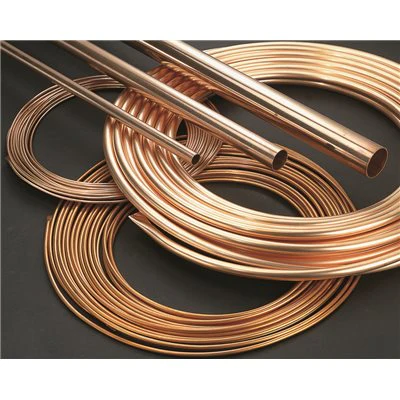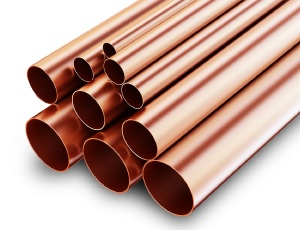
Copper pipes play a crucial role in refrigeration systems, offering excellent thermal conductivity, corrosion resistance, durability, and ease of fabrication. At Finstar Industrial Systems, we recognize the importance of copper pipes in refrigeration and prioritize educating our customers on their roles and applications. By providing this information, we ensure that customers make informed decisions and trust Finstar Industrial Systems to supply the best copper pipes for their refrigeration needs.
Role in Refrigeration
- Refrigerant Lines: transport refrigerant between the evaporator, compressor, condenser, and expansion valve.
- Heat Exchangers: Their excellent heat transfer properties make copper ideal for constructing evaporators and condensers.
- Expansion Lines: Copper ensures controlled refrigerant flow during the expansion phase of the refrigeration cycle.
- Connections: These pipes connect various components in the refrigeration system, providing a sealed and efficient pathway for refrigerant.
Types of Copper Pipes for Refrigeration
Soft Copper Tubing (Annealed Copper Tubing)
- Characteristics: Flexible and easily bent without special tools.
- Applications: Ideal for refrigerant lines requiring multiple bends and turns.
- Advantages: Reduces fittings, minimizing potential leaks and simplifying installation.
Hard Copper Tubing (Drawn Copper Tubing)
- Characteristics: Rigid and requires bending tools; sold in straight lengths.
- Applications: Used in commercial refrigeration systems and areas needing structural integrity.
- Advantages: Durable and suitable for high-pressure applications.
ACR Copper Tubing (Air Conditioning and Refrigeration)
- Characteristics: Designed specifically for HVAC and refrigeration; cleaned, dehydrated, and sealed to prevent contamination.
- Applications: Used in air conditioning systems, refrigeration units, and heat pumps.
- Advantages: Maintains cleanliness, ensuring optimal performance.
Types K, L, and M
- Type K: Thick walls for high-pressure refrigerant lines and underground installations.
- Type L: Medium wall thickness, commonly used in residential and commercial refrigeration.
- Type M: Thin walls for low-pressure applications.
Key Considerations for Using Copper Pipes in Refrigeration
- Pressure Ratings: Choose pipes with ratings well above system requirements.
- Size and Diameter: Ensure the pipe matches refrigerant flow requirements.
- Flexibility and Installation: Soft tubing is ideal for bends, while hard tubing works well for straight runs.
- Corrosion Resistance: Select coated or insulated pipes for harsh environments.
- Thermal Conductivity: Use copper for its efficient heat transfer capabilities.
- Insulation: Proper insulation prevents heat loss, condensation, and corrosion.
- Compliance: Ensure adherence to local and industry standards.
Copper Pipes Available at Finstar Industrial Systems
At Finstar Industrial Systems, we provide various types of copper pipes, including Type K, L, and M, as well as ACR tubing, flexible copper tubing, and rigid copper tubing. Our products cater to diverse applications, from small-scale refrigeration systems to large industrial setups.
Global Sourcing and Distribution
We source copper pipes from top manufacturers in the United States, South Africa, Europe, China, Japan, Mexico, and Chile, adhering to international standards like ASTM, EN, and JIS. Finstar Industrial Systems distributes these pipes to Kenya and neighboring countries, including Uganda, Tanzania, Rwanda, Burundi, and South Sudan.
Trust Finstar Industrial Systems to supply high-quality copper pipes tailored to your refrigeration needs.

In Finstar Industrial Systems, we distribute these copper pipes to other regions like Uganda, Tanzania, Rwanda, Burundi, South Sudan, among others.

